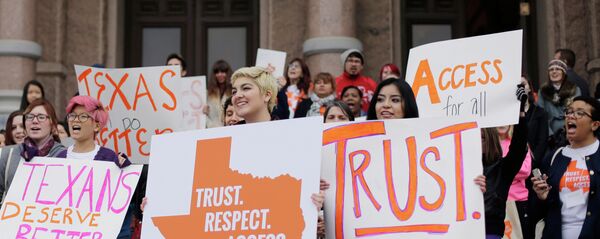"We hold, based on constitutional history, this court's decisions, and longstanding practice, that a state may draw its legislative districts based on total population," Justice Ruth Bader Ginsburg wrote in the court’s opinion.
Conservatives who filed the challenge, Sue Evenwel and Edward Pfenninger, had argued that only eligible voters in any given area should be counted when drawing legislative districts.
Their proposal would have given more electoral weight to rural areas which are more likely to vote Republican, and diminish the effectiveness of the vote in urban areas which do not always have as high a percentage of eligible voters.
“It remains beyond doubt that the principle of representational equality figured prominently in the decision to count people, whether or not they qualify as voters," the court determined.
"Adopting voter-eligible apportionment as constitutional command would upset a well-functioning approach to districting that all 50 states and countless local jurisdictions have followed for decades, even centuries. Appellants have shown no reason for the court to disturb this longstanding use of total population."
While Justices Clarence Thomas and Samuel Alito voted with the majority, they wrote differing opinions on the matter.
"The Constitution does not prescribe any one basis for apportionment within states. It instead leaves states significant leeway in apportioning their own districts to equalize total population, to equalize eligible voters, or to promote any other principle consistent with a republican form of government.”
"The majority should recognize the futility of choosing only one of these options. The Constitution leaves the choice to the people alone —— not to this court," Thomas wrote.
Alito wrote that while he agreed with the majority vote, he rejected the government's argument that there is a constitutional basis for requiring that legislative districts be equal in total population.






